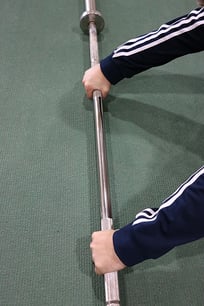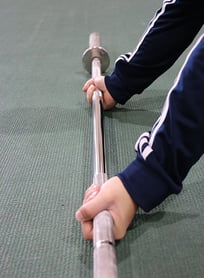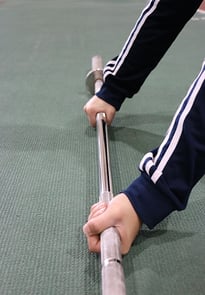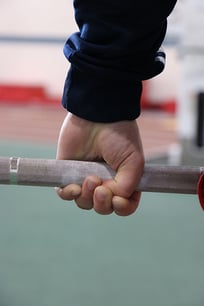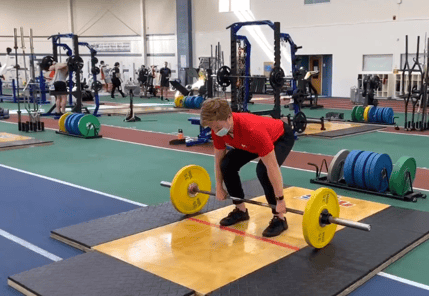 If you are like me, with a busy, on-the-go lifestyle, you probably don't have more than an hour to get inside the gym and train. Lucky for you, that’s okay!
If you are like me, with a busy, on-the-go lifestyle, you probably don't have more than an hour to get inside the gym and train. Lucky for you, that’s okay!
By training with a full-body routine utilizing complexes, you can spend less time in the gym and still see the results. This not only saves you time in the gym, but it also allows for more time with family and friends, all while seeing the results you want. One way to accomplish this is through a barbell or kettlebell complex.
What Is a Complex?
A complex is a series of movements that are performed back to back in which the set number of reps is done for a movement before moving to the next. A complex can be performed with a barbell or one or two kettlebells/dumbbells. Each movement within the complex should flow into the next one. A good way to achieve this is to start from the ground and work your way up.
How to Build a Complex
Any number of reps can be done for each movement. The more movements within the complex, the fewer reps you will want to complete for each one. A complex consisting of four to six movements should be kept at one to five reps per movement. If your complex is only two to three movements, you can use higher reps. Some examples of complexes include the following:
Barbell 1
- Row x 1–5 reps
- Deadlift x 1–5 reps
- Hang Power Clean x 1–5 reps
- Front Squat x 1–5 reps
- Push Press 1–5 reps
Barbell 2
- Deadlift x 3–6 reps
- Clean x 3–6 reps
- Press x 3–6 reps
Kettlebell or Dumbbell 1
- Pushup x 1–5 reps
- Row x 1–5 reps
- DL x 1–5 reps
- Clean or Snatch x 1–5 reps
- Squat x 1–5 reps
- Press x 1–5 reps
Kettlebell or Dumbbell 2
- Pushup x 3–10 reps
- Row x 3–10 reps
- Swing x 3–10 reps
- Squat x 3–10 reps
I recommend completing two to three rounds, but you can also work up to as many rounds as possible with good technique. Within each complex there will be a movement that limits the weight for the entire complex, and it is better to start the first round with a weight you think will be too light.
For example, the movement that will decide your weight in Barbell 1 above is the push press. The deadlift might feel easy, but that is okay. By the end of the complex you will be happy you did not go as heavy as possible. Try to do the entire complex without setting down the weight to rest, and remember to complete all of the reps for one movement before moving on to the next movement.
Why Should I Implement Complexes?
These complexes are an amazing full-body tool that you can use if you are running low on time for your session, or if you have limited days per week you can come in and train. They are also a great way to add additional volume to your workouts, or can even be used as a finisher at the end to build resilience and touch up your conditioning. If your goal is to be better conditioned, adding a sprint or jog component at the end using pieces such as the echo bike, rower, ski-erg, or SPARC trainer can provide a nice cherry on top of an already stellar total-body workout.
Give these complexes a try to get your blood pumping, and let us know how they go! If you need any technique tips or complete workout programs, come visit us at the track desk for more information on what we offer and how to get that set up!
This blog was written by Evan James, NIFS Exercise Physiologist EP-C, Health Fitness Instructor, and Personal Trainer. To learn more about the NIFS bloggers, click here.


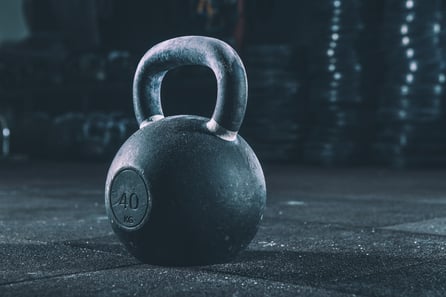 The Russian kettlebell is unique among exercise tools. It is an offset-handle weight that travels easily between the legs in a pendulum movement that can be easily seen in the kettlebell swing (two-hand and one-hand swings). If done correctly, the hips hinge straight backward as if you were trying to push a swinging door open while holding a tray. If you squat, even a little bit, there is little rearward movement and the door doesn’t open. Hip power is lost.
The Russian kettlebell is unique among exercise tools. It is an offset-handle weight that travels easily between the legs in a pendulum movement that can be easily seen in the kettlebell swing (two-hand and one-hand swings). If done correctly, the hips hinge straight backward as if you were trying to push a swinging door open while holding a tray. If you squat, even a little bit, there is little rearward movement and the door doesn’t open. Hip power is lost. 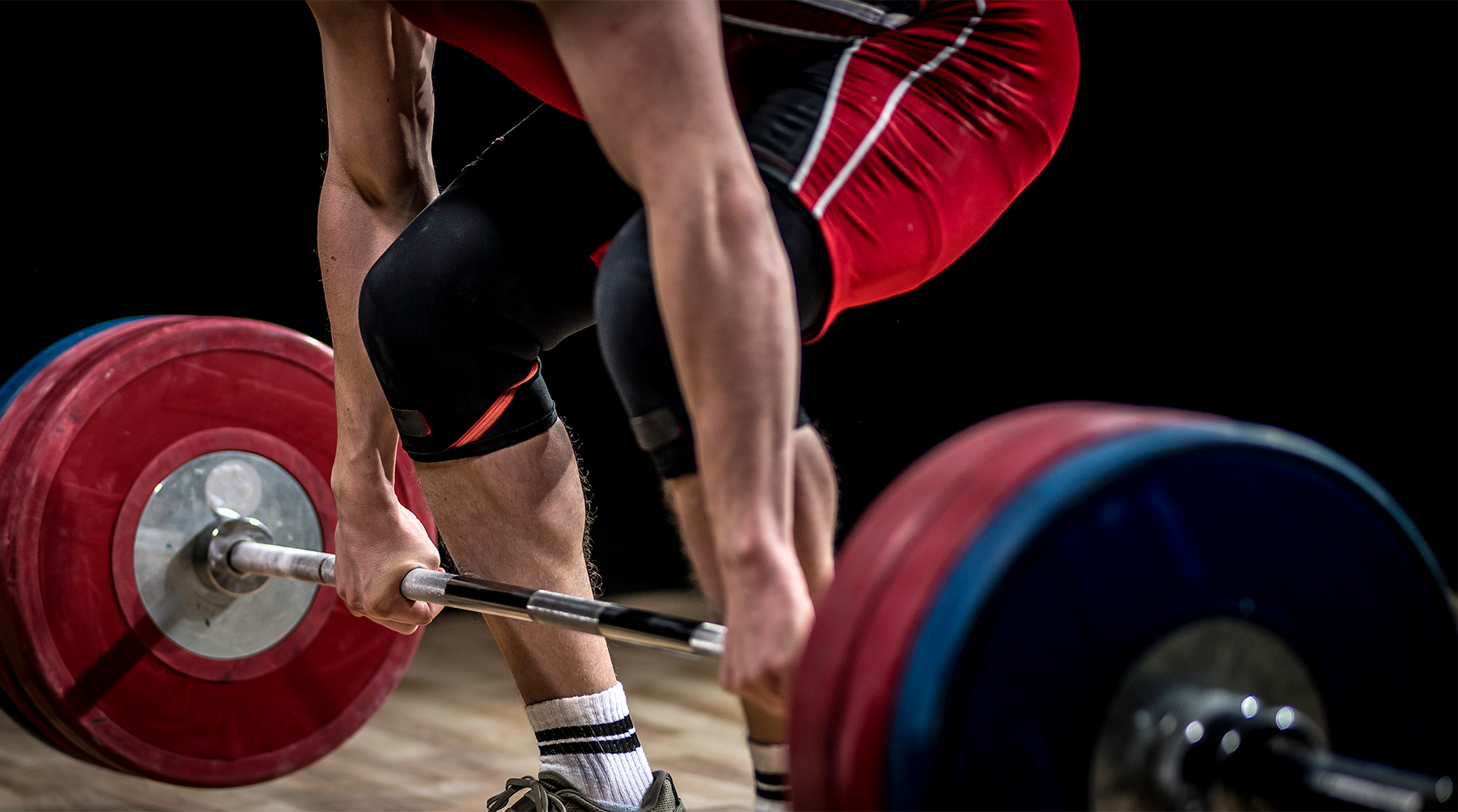
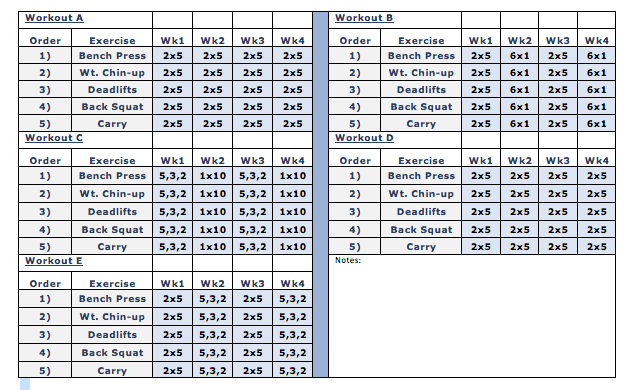
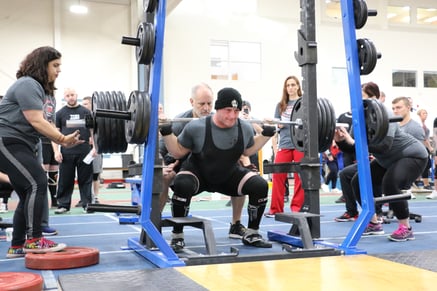 Almost five years ago, the team and I hosted the first ever powerlifting event here at NIFS. Also known as the Iron Triathlon (shirt slogan spoiler alert), the first year was a modest one with 25 athletes competing. This year, the competition registration sold out in just under three days! From our humble beginnings to this year’s event, it’s been a ride. There has been so much hard work, resulting in so many smiles and victories for both the athletes and the crew. We have learned a lot from year one to now, and we have developed from our challenges and gotten better each year.
Almost five years ago, the team and I hosted the first ever powerlifting event here at NIFS. Also known as the Iron Triathlon (shirt slogan spoiler alert), the first year was a modest one with 25 athletes competing. This year, the competition registration sold out in just under three days! From our humble beginnings to this year’s event, it’s been a ride. There has been so much hard work, resulting in so many smiles and victories for both the athletes and the crew. We have learned a lot from year one to now, and we have developed from our challenges and gotten better each year.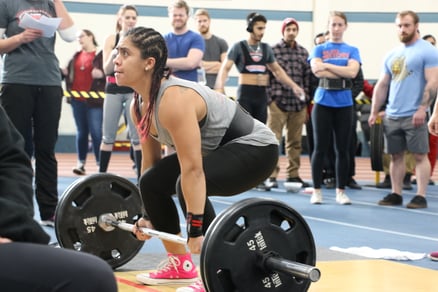 One thing we hear a lot is how inclusive and supportive the environment is on event day. Even though athletes arrive to be victorious over one another, they all support and cheer on each other to do their best. I think the sport of powerlifting is just this way, but I also think the NIFS event intensifies the comradery among these athletes. It sounds corny, but there is something in the air that day, something that reinforces that it’s “WE” and not just “I.”
One thing we hear a lot is how inclusive and supportive the environment is on event day. Even though athletes arrive to be victorious over one another, they all support and cheer on each other to do their best. I think the sport of powerlifting is just this way, but I also think the NIFS event intensifies the comradery among these athletes. It sounds corny, but there is something in the air that day, something that reinforces that it’s “WE” and not just “I.”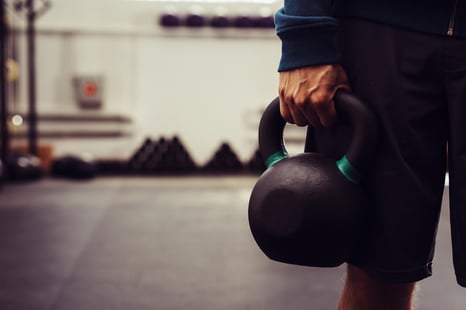 How long have you been stuck on your max for bench press or unable to become efficient at
How long have you been stuck on your max for bench press or unable to become efficient at  In my previous posts,
In my previous posts,  In my previous post,
In my previous post,  If you are one of the athletes who want to throw their hat into the ring, I want to give you three key principles that will help you be the best you can be on event day for each of the three lifts. Those lifts, of course, are the squat, bench, and deadlift. Today we will focus on the squat. We will get to the other two soon, so keep an eye on the
If you are one of the athletes who want to throw their hat into the ring, I want to give you three key principles that will help you be the best you can be on event day for each of the three lifts. Those lifts, of course, are the squat, bench, and deadlift. Today we will focus on the squat. We will get to the other two soon, so keep an eye on the 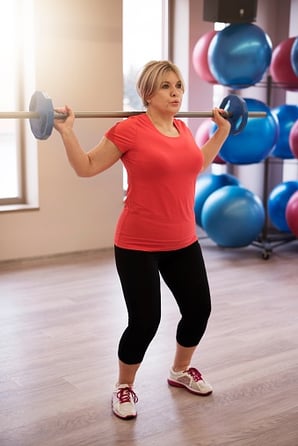 Let’s play out a little scenario. Judy just renewed her gym membership because it’s almost time for her annual summer vacation. She currently weighs 170 pounds but wants to lose around 30 pounds before she goes on vacation. She has taken herself through this transformation once before by running 4 miles on the treadmill every other day until she finally got to her desired weight. She plans to come to the gym this year with the same game plan as last time. Judy does not lift weights because she only wants to lose fat, not gain muscle.
Let’s play out a little scenario. Judy just renewed her gym membership because it’s almost time for her annual summer vacation. She currently weighs 170 pounds but wants to lose around 30 pounds before she goes on vacation. She has taken herself through this transformation once before by running 4 miles on the treadmill every other day until she finally got to her desired weight. She plans to come to the gym this year with the same game plan as last time. Judy does not lift weights because she only wants to lose fat, not gain muscle. 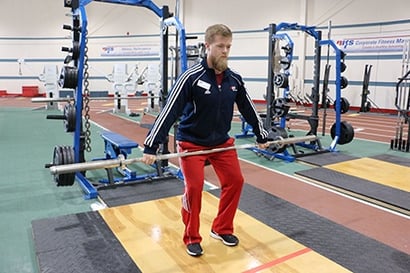 One of the most important (and sometimes overlooked) pieces of the resistance training puzzle could be right in the palm of your hands. Have you ever thought about the way you hold onto an Olympic or powerlifting bar? For some, the answer may be no. You may be worried more about other techniques, such as posture or breathing. For others, the answer may be yes. The effort you put into how you grip the bar may be your key to success in lifts such as the snatch, deadlift, and clean, among many other resistance exercises.
One of the most important (and sometimes overlooked) pieces of the resistance training puzzle could be right in the palm of your hands. Have you ever thought about the way you hold onto an Olympic or powerlifting bar? For some, the answer may be no. You may be worried more about other techniques, such as posture or breathing. For others, the answer may be yes. The effort you put into how you grip the bar may be your key to success in lifts such as the snatch, deadlift, and clean, among many other resistance exercises. 